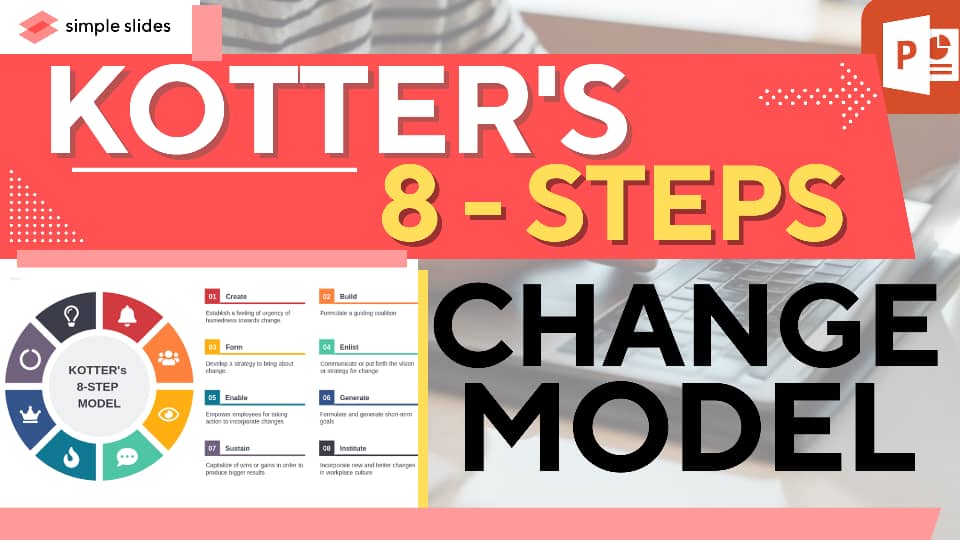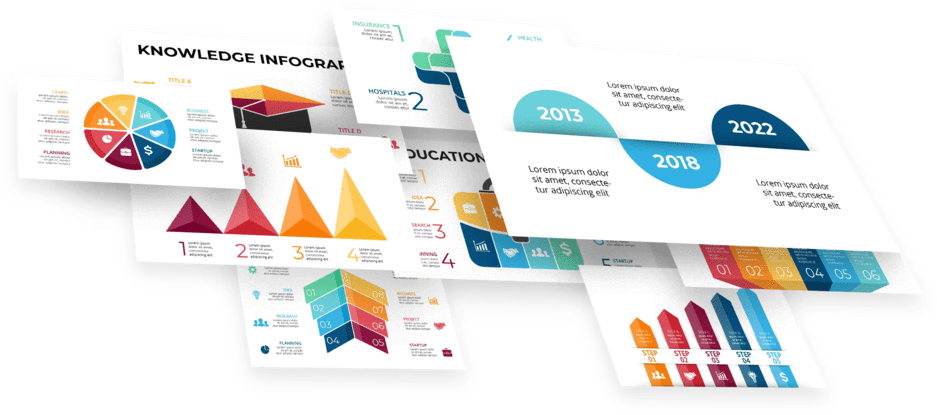Kotter's 8-Step Change Model: How To Implement It
Nov 15, 2022
Change is one of the biggest challenges you will face as a business leader, whether major or minor. Interestingly, it's one thing you can't avoid in business.
So, how can you go through organizational change without disrupting your business or creating new issues?
You will need a reliable and effective change management framework. Kotter's 8-step change model is a framework you can trust for your change process.
We will break down Kotter's 8-step change model and show you can implement it successfully.
What Is Kotter's 8-Step Change Model?
Kotter's 8-step change model is a framework that helps change leaders in various industries to drive organizational change and innovation by motivating employees. It works based on the idea that a large-scale change initiative requires the support of most of the workforce.
John P. Kotter, a Harvard Business School professor, presented this framework in Leading Change. Leading Change is a book that explains why most organizational change initiatives fail.
Whether your company requires restructuring, cultural change, new technology, or location change, you can trust Kotter's change management model to help you successfully implement change.
What Are the 8 Steps in Kotter's Change Model?
The eight steps in Kotter's change management model are vital for successful transitions. Steps 1 to 3 will help you prepare your business environment for change, while the following three steps will help you usher in the change. Finally, steps 7 and 8 will help you execute and reinforce the change.
- Develop a sense of urgency.
- Put a team together
- Develop a strategic vision
- Communicate your change vision
- Eliminate barriers
- Set short-term goals
- Maintain momentum
- Cement the change
How To Implement Kotter's 8-Step Change Model.
Kotter designed this framework to enable you to overcome any challenge during the change process. Let's take a closer look at each of the steps.
Develop a Sense of Urgency.
Start implementing Kotter's 8-step change model by creating urgency. People hardly see a reason for change when comfortable in their environment. So, create a sense of urgency to get them off their feet.
To create urgency, you must make the employees understand the necessity of change. You can show them an existing problem or potential threat and explain how a change will be the best solution. You may also share success stories of similar initiatives. Aim to get at least 75% of the organization's management on your side.
For instance, you have noticed that your customers are abandoning your product for a newer option in the market. You can show the numbers to the employees and explain that you either have to revamp your product or risk going out of business.
You can download a SWOT analysis template to identify and present your organization's threats and opportunities.
Put a Team Together.
You can't implement organizational change alone. Get yourself a team that will join you in driving your change initiative.
To get the desired results, your team members should have the skills, experience, qualifications, influence, and authority needed to drive change. Your team should also consist of the following sets of people:
- Sponsor: A senior executive who will head the project. Sponsors offer executive-level support and ensure the availability of the necessary resources.
- The senior guiding team: The project sponsor handpicks this team. The team includes individuals who can handle decision-making and resource management.
- Field-guiding team: Your field-guiding team should include reputable employees representing the different departments involved in the change process.
- Change team: These are the managers that oversee tasks.

Develop a Strategic Vision.
You have a vision of where the organization will be after the change. It's time to document it so that everyone can understand your plans.
Use a change management plan to list all the tasks, milestones, and deliverables. After that, you can develop an effective strategy and realistic timeline for their completion.
Additionally, you can boost the adoption of your vision by listening to the employees' opinions. Take your time to create a clear and appealing vision.
Communicate Your Change Vision.
We can't overemphasize the importance of communication at this stage. Create a communication plan to communicate your vision and ensure everyone is on the same page.
You should communicate the change as often as possible and utilize all organizational communication channels until the organization accepts it. Also, address any concerns the employees may have regarding the impending change.
Eliminate Barriers.
The process of implementing organizational-wide change has lots of barriers. If you don't remove them, they can hinder the success of your project.
Obstacles may come in varying forms, including organizational culture and policies, obstinate employees, inadequate resources, etc. Boost your chances of success by identifying and removing obstacles early.
Set Short-Term Goals.
Change can be a long and tiring process. So, you will need to keep everyone motivated.
Set feasible and short-term goals to keep everyone motivated throughout the journey. Short-term wins will give your employees a sense of accomplishment and encourage them to do more.
Also, endeavor to recognize and reward high-performing employees.
Maintain Momentum.
Now that your plan is in motion, you must take steps to keep things moving. Many change initiatives fail during implementation due to complacency.
As you progress, continue to review the process and make necessary adjustments. Also, continue to communicate the importance of the organization's transition.
Cement the Change.
The final step in Kotter's model is to reinforce the change and avoid backsliding. However, people find it hard to change their behavior. So, you must ensure that the change sticks to your corporate culture and organizational processes.
Continue monitoring and training your employees until the change becomes a part of them. You should also consider your new vision when hiring or promoting employees. Finally, ensure your values, standards, processes, and other organizational elements align with the new vision.
Don't start your project without our communication plan template.
Principles of Kotter's Change Model.
In addition to the eight steps, Kotter has introduced four change principles. These principles include:

Select Few + Diverse Many.
Don't make a small group of managers and leaders the sole driver of your change initiative. Giving all power to this "select few" will lower your chances of success.
Considering the "diverse many" affected by the change would be best. By considering the needs of this broader group, you will be able to get more people to support your initiative. So, get include representatives from different parts and levels of your company.
Head + Heart.
We understand the need to back essential decisions with data. However, don't rely on logic alone because it will only appeal to the "head" of the employees.
You should also appeal to the "heart" of your workforce by showing the people how they will benefit from the proposed change. The combination of head and heart will go a long way in making your initiative more desirable.
Management + Leadership.
To oversee a successful transition, you need excellent leadership and management skills. Have the ability to manage the plans, resources, and other aspects of the project and possess the skills needed to lead the workforce toward your vision.
Have To + Want To.
Do your employees feel like they have to be involved in this change? Or do they want to be a part of it? The answer to these questions can determine the success or failure of your project.
Take steps to make the employees want to play a part in the transition voluntarily. To prevent them from feeling compelled, explain the reasons for the change and carry them along throughout the process.
Check out our multipurpose timeline infographics.
Benefits of Kotter's 8-Step Change Model.
Due to its benefits, Kotter's 8-step change model has remained a vital change management tool for decades. See them below:
- It is a step-by-step guide, so it is easy to use
- It creates urgency
- It helps managers to get their entire organization involved
Drawbacks of Kotter's 8-Step Change Model.
Kotter's change model isn't without some cons. They include:
- It lacks detail due to its emphasis on urgency
- It is time-consuming
Download Kotter's Model of Change Template.
This template perfectly presents Kotter's 8-step change model to any audience. It features professionally-designed slides that illustrate Kotter's change model in various ways. You will also find it fully editable and compatible with all presentation software.
Frequently Asked Questions:
What is Kotter's 8-step change model?
Kotter's 8-step change model is a famous change management framework for organizations. John Kotter introduced it to help companies drive fast adoption of change.
What are Kotter's eight steps to change?
Kotter's eight steps to change include:
- Develop a sense of urgency
- Put a team together
- Develop a strategic vision
- Communicate your change vision
- Eliminate barriers
- Set short-term goals
- Maintain momentum
- Cement the change
What are the four principles of Kotter's change model?
The four principles of Kotter's change model include:
- Leadership + Management
- Head + Heart
- Have to + Want to
- Select Few + Diverse Many
Related Articles:
Get A Free Sample of Our Award-Winning PowerPoint Templates + University
Get A Free Sample of Our Award-Winning PowerPoint Templates + University
Join our mailing list to receive the latest news and updates from our team.
Don't worry, your information will not be shared.
We hate SPAM. We will never sell your information, for any reason.





